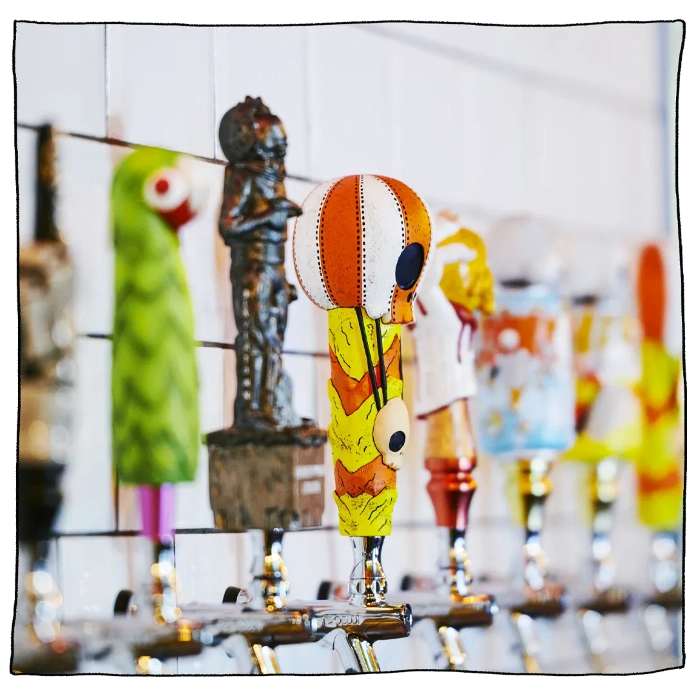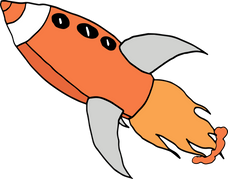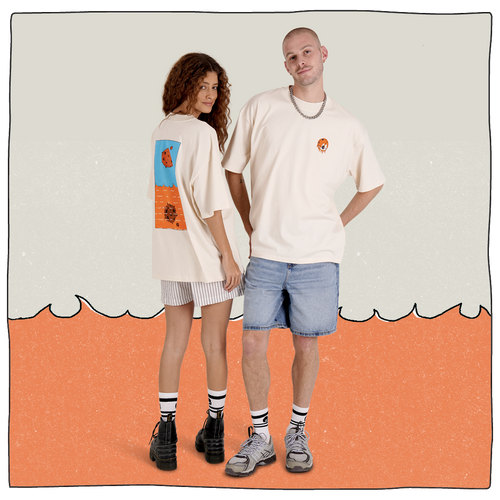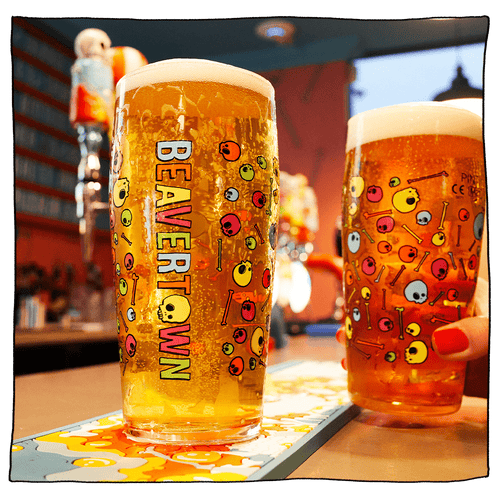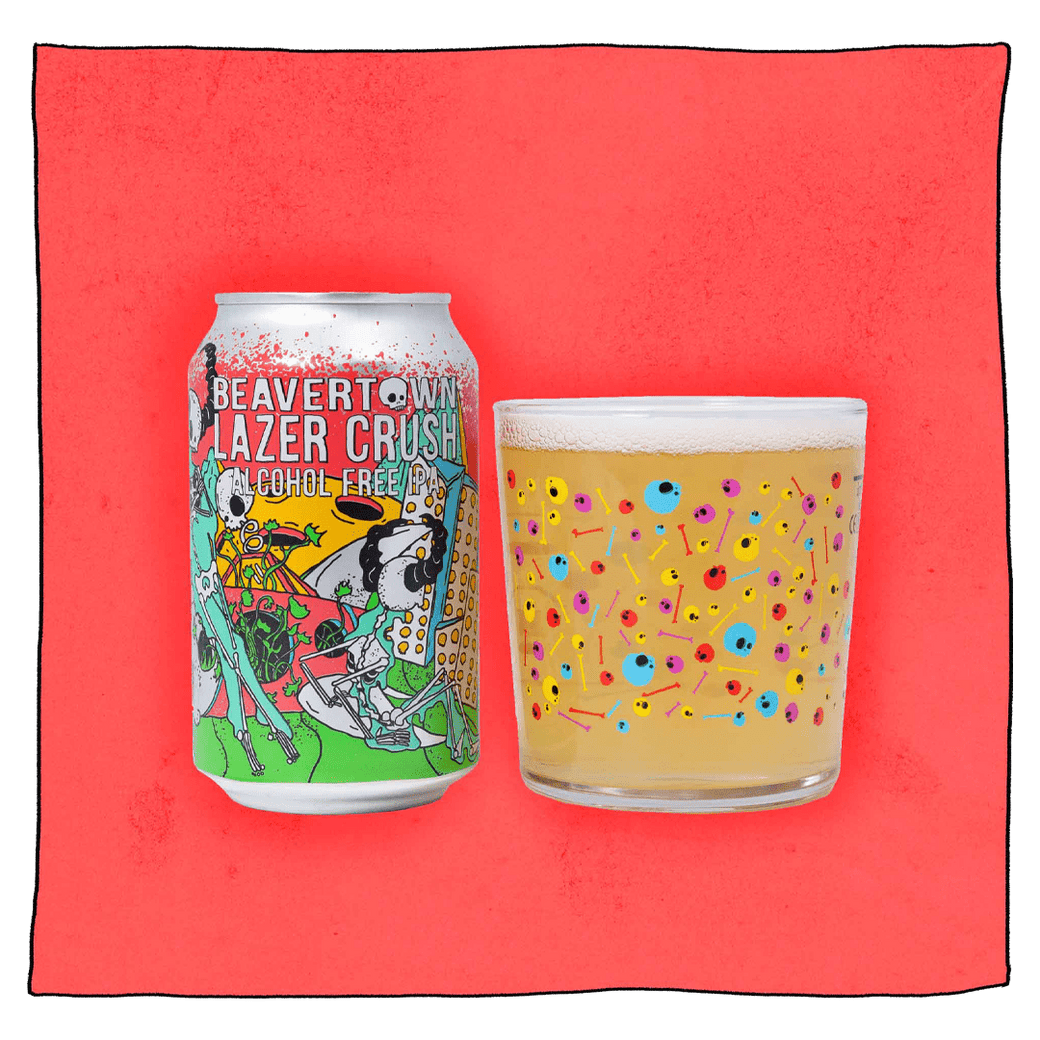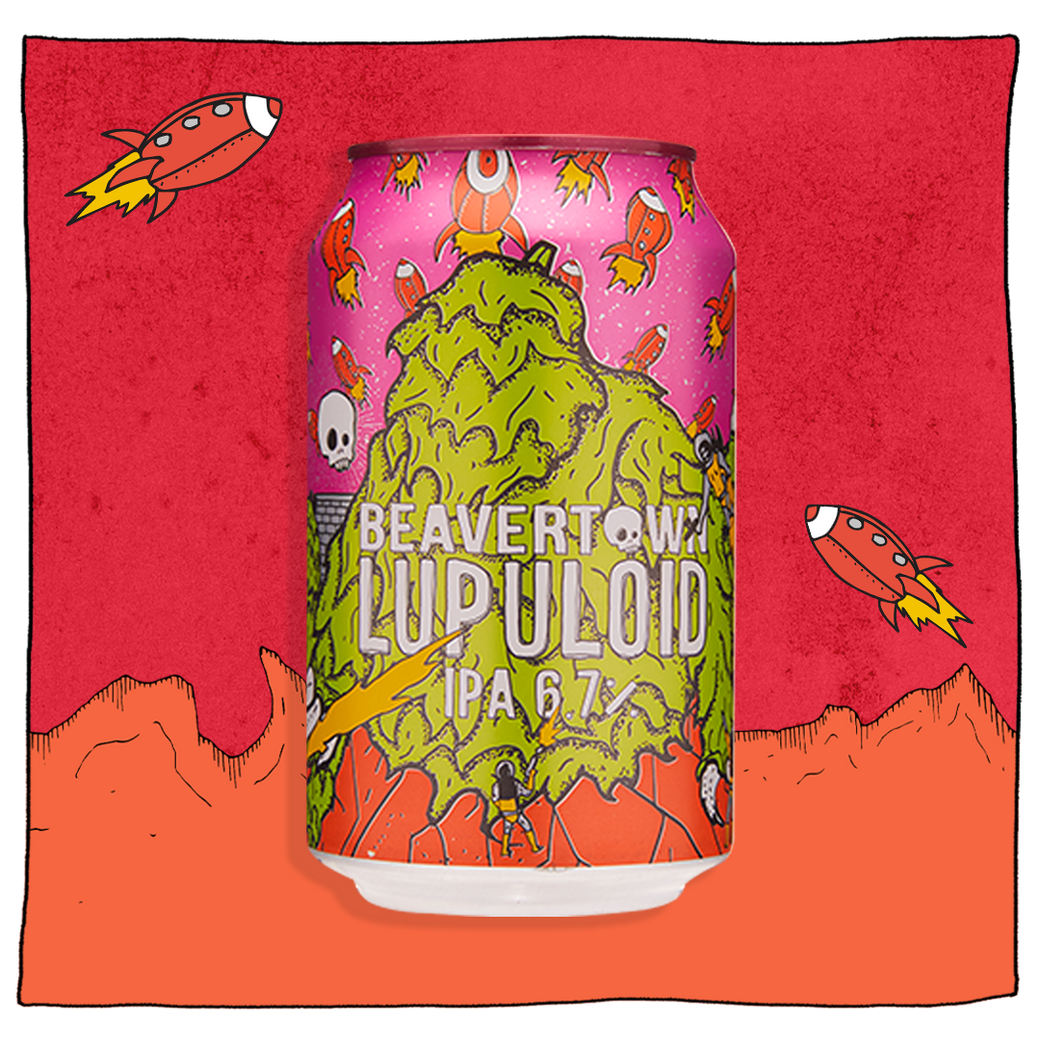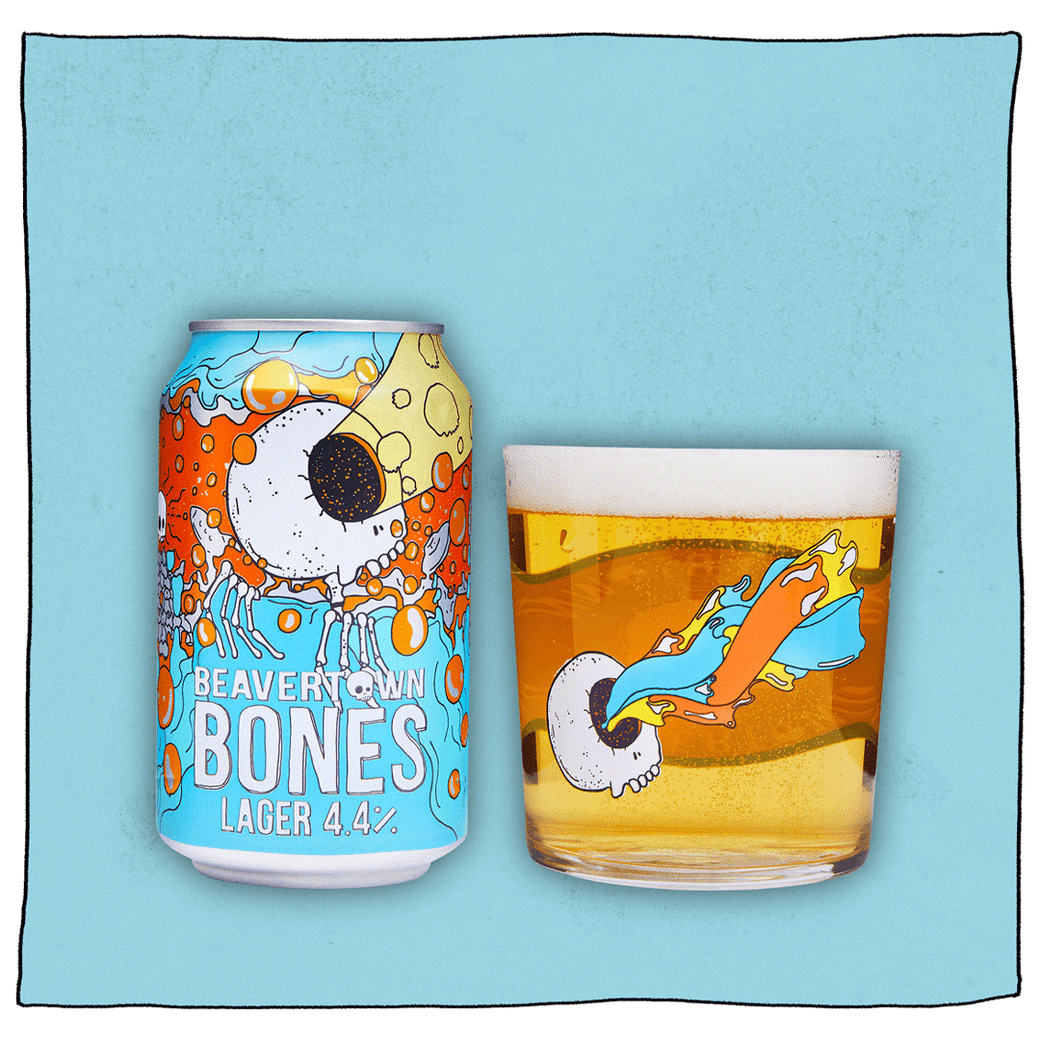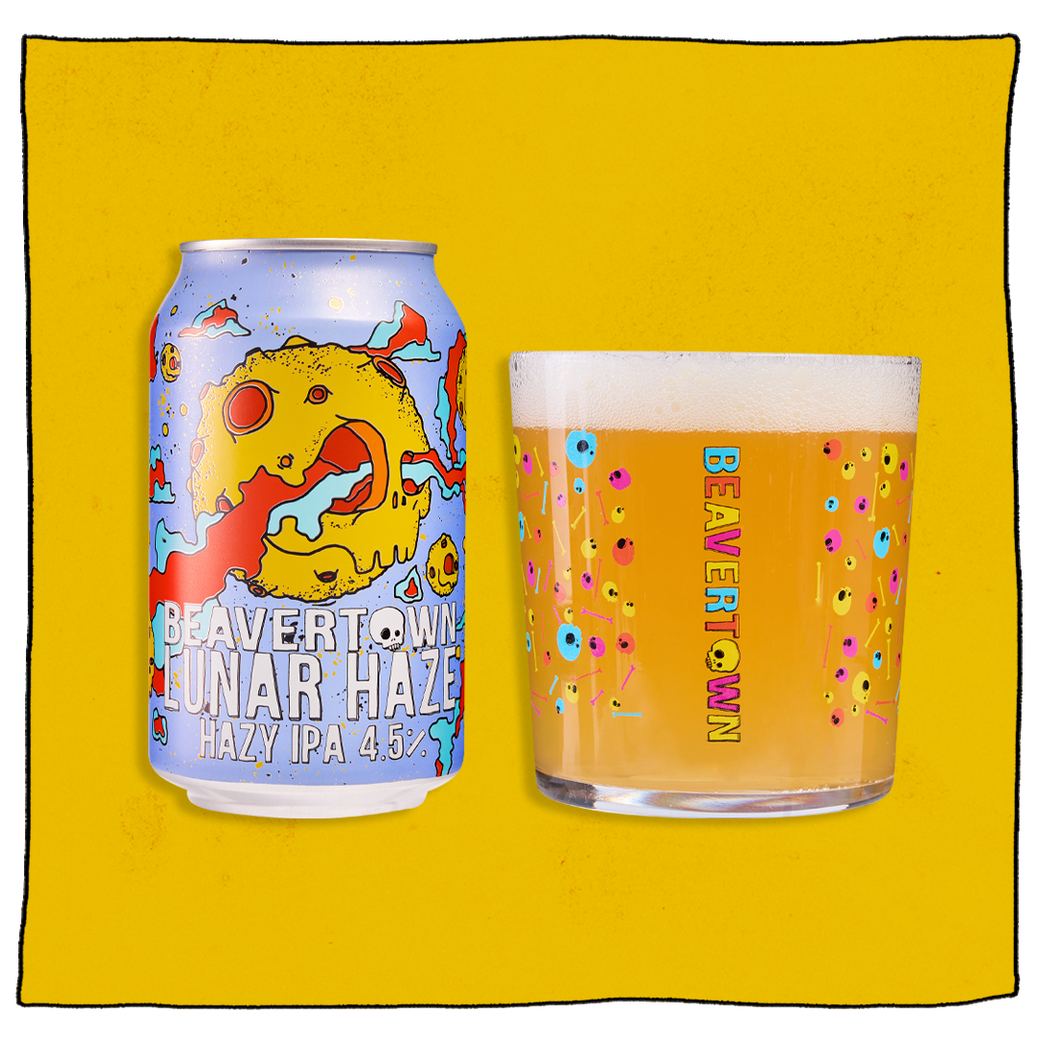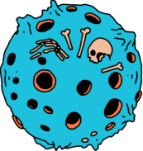Open Terms
1. Application and entire agreement
1.1. These terms and conditions (the “Terms and Conditions”) will apply to the purchase of the goods detailed in our quotation (Goods) by the buyer (you) from Beavertown Brewery Limited a company registered in England and Wales under number 7704796 whose registered office is at Unit 7 Ponders End Industrial Estate, 35 East Duck Lees Lane, Enfield, London, England, EN3 7SR (we or us).
1.2. These Terms and Conditions will be deemed to have been accepted by you when (a) you provide to us acceptance of the quotation in accordance with Clause 5.4 below, or (b) upon the delivery or collection of the Goods, (whichever happens earlier), and will constitute the entire agreement between us and you.
1.3. These Terms and Conditions and the quotation (together, the Contract) apply to the purchase and sale of any Goods between us and you. Any terms and conditions proposed by you or which you may purport to apply under any purchase order or confirmation of order, or which are implied by trade, custom, practice or course of dealing, are expressly excluded. The signing or acceptance of any of your documentation by any of our employees or agents shall not modify the Contract or form part of any contract between you and us.
1.4. All descriptions and illustrations contained in our advertisements and other sales literature are intended merely to present a general impression of the products described in them and nothing contained in them shall form part of the Contract. The sale of Goods to you under the Contract shall not be a sale by sample.
1.5. These Terms and Conditions cover the supply of Goods by us across all routes to market including the on trade, off trade and wholesale. Accordingly, some of these Terms and Conditions may not apply to your route to market.
2. Interpretation
2.1. A "business day" means any day other than a Saturday, Sunday or bank holiday.
2.2. The headings in these Terms and Conditions are for convenience only and will not affect their interpretation.
2.3. Words imparting the singular number include the plural and vice-versa.
2.4. Any phrase introduced by the terms “including”, “in particular” or any similar expression shall be construed as illustrative and shall not limit the sense of the words preceding those terms.
2.5. Unless otherwise specified, a reference to “writing” does not include fax.
2.6. Any reference to “persons” includes natural persons, firms, partnerships, companies, corporations, associations, organisations, governments, states, governmental or state agencies, foundations and trusts (in each case whether or not having separate legal personality and irrespective of the jurisdiction in or under the law of which it was incorporated or exists).
2.7. References to statutes, any statutory instrument, regulation or order shall be construed as a reference to such statute, statutory instrument, regulation or order as amended, supplemented or re-enacted from time to time.
2.8. Words and expressions which are defined in the Companies Act 2006 have the same meanings as are given to them in that Act.
3. Goods
3.1. The description of the Goods is set out in our sales documentation (which includes catalogues, brochures and online listing), unless expressly changed in our quotation. In accepting the quotation you acknowledge that you have not relied upon any statement, promise or other representations about the Goods by us. Descriptions of the Goods set out in our sales documentation are intended as a guide only.
3.2. We can make any changes to the specification of the Goods which are required to conform to any applicable safety or other statutory or regulatory requirements.
4. Price
4.1. The price (Price) of the Goods is set out in our quotation current at the date of your order or such other price as we may agree in writing.
4.2. If the cost of the Goods to us increases due to any factor beyond our control including, but not limited to, material costs, labour costs, alteration of exchange rates or duties, or changes to delivery rates, we can increase the Price prior to delivery. We will inform you of any increase in the Price under this clause in advance of the Price increase coming into effect.
4.3. Any increases in government alcohol duty rates or other taxes, or any third party product price increases, will be passed on immediately in full. In the event of any such change, orders accepted but not delivered at the date of such change will be fulfilled at the revised prices.
4.4. You may be entitled to discounts. Any and all discounts will be at our discretion.
4.5. The Price is inclusive of fees for packaging and carriage (unless expressly agreed to and stated as otherwise) to U.K. mainland premises, excluding Northern Ireland, Scottish Islands, Isle of Man, Channel Islands and Isles of Scilly. We reserve the right to charge for any deliveries which we believe (acting reasonably) cost significantly more than our average cost to deliver. If Goods are supplied to premises outwith the UK, additional costs may be passed on to you, including (where appropriate) any rise in cost due to currency fluctuations.
4.6. The Price is inclusive of any applicable VAT and other taxes or levies which are imposed or charged by any competent authority.
4.7. Unless you are an approved wholesaler of ours and are purchasing Goods on that basis, all prices are quoted to you on the basis that the Goods are being purchased by you for retail sale to end consumers for consumption on premise at an outlet agreed and approved by us.
4.8. Where you purchase as an approved wholesaler, all prices are quoted to you on the basis that the Goods are being purchased by you for onward sale to retail customers who will subsequently sell to end consumers for consumption on premise at an outlet. For tax/legal compliance purposes, we may from time to time ask you to demonstrate to us where you intend to onward sell our Goods.
4.9. Without limiting our other rights and remedies, should the Goods be sold other than in accordance with the conditionality set out in clauses 4.7 and 4.8, we reserve the right to clawback or withhold any discounts (e.g. off-invoice, retrospective, advance), loyalty bonuses, listing fees and/or sponsorship fees granted in respect of such Goods, and to charge our wholesale selling price for such volume of Goods and any future volume of Goods purchased by you until such time as you prove to our reasonable satisfaction that the conditionality in clauses 4.6 and 4.7 is being met.
5. Orders, cancellation and alteration
5.1. Details of the Goods set out in our sales documentation are subject to alteration without notice and are not a binding offer to sell the Goods.
5.2. The quotation (including any non-standard price negotiated in accordance with clause 4) is valid for a period of 1 day only from the date shown in it unless expressly withdrawn by us at an earlier time.
5.3. Either party may cancel the order for any reason prior to your acceptance (or rejection) of the quotation.
5.4. All orders shall be deemed to be an offer by you to purchase products pursuant to these Terms and Conditions. No order shall be binding on us until it is accepted over the telephone or by electronic communication by one of our authorised representatives or confirmed by us in writing. For an order to be eligible for acceptance it must meet the minimum order value as stated by us in a quotation (if applicable). The minimum order value will be set by us at our absolute discretion from time to time.
5.5. No Goods are to be exported outside of the EEA. If you are an approved wholesaler of the Goods then you must ensure that this clause is replicated in your terms and conditions with your customer.
5.6. The Goods are intended for the UK market and any onward sale or related duties etc. payable or non-UK compliance requirements shall be solely your responsibility. The Goods comply with applicable UK requirements for labelling. We make no guarantee that the labelling of the Goods complies with any local law requirements which may apply outside of the UK. Any changes to the information on labels produced by us will be solely the responsibility of the person that makes such change. If you intend to export the Goods outside of the UK, you are responsible for ensuring the label complies with any local law requirements. You will keep us fully indemnified at all times on demand against any assessments, claims, demands, losses, liabilities or expenses which we incur as a result of any failure by you to fulfil your obligations under applicable law or procedures (whether legally binding or not).
5.7. If you are wholesaling the Goods, you warrant and confirm that you have been approved for registration with AWRS (the Alcohol Wholesaler Registration Scheme pursuant to HMRC’s Excise Notice 2002) and that you will inform us of any cancellation or change to your AWRS registration. If you are exporting any Goods , you warrant and confirm that you have been approved for registration with WOWGR (Warehousekeepers and Owners of Warehoused Goods Regulations) and you will inform us of any cancellation or change to your WOWGR registration.
5.8. If we agree to supply you with any Goods upon which excise duty (or other duties or taxes) has not been paid, it will be on the strict condition that you comply with all legislation and procedures (whether legally binding or not) relating to excise duty suspension or such other regime as may be applicable, including receipting the products in the Excise Movement and Control System within 5 business days of delivery of the relevant products to you. You will keep us fully indemnified at all times on demand against any assessments, claims, demands, losses, liabilities or expenses which we incur as a result of any failure by you to fulfil your obligations under such legislation or procedures (whether legally binding or not). We shall not be obliged to provide you with any certificate or similar relating to payment of excise duty on any delivery. The duty status shall be shown on the delivery note in question, a copy of which should be retained for your records.
6. Delivery
6.1. We will arrange for the delivery of the Goods to the address specified in the quotation, or your order, or to another location we agree in writing. In the event of different addresses being specified in each of the order and the quotation, the delivery will be made to the address confirmed in our final communication with you. You will make sure that the premises to which the Goods are to be delivered are compliant with all relevant health and safety legislation and codes of practice. If any premises are not compliant, we may suspend deliveries until they are compliant, without any liability to us. Alternatively, we may agree with you to deliver the Goods to the nearest safe place until all identified health and safety concerns have been addressed at the originally agreed delivery location. Delivery in respect of the Goods is completed on arrival of the Goods at the agreed delivery location or nearest safe place (where relevant).
6.2. If you do not specify a delivery address or if we both agree, you must collect the Goods from our premises or from the agreed delivery location at the time specified by us, in which case delivery in respect of the Goods is completed on the completion of loading of the relevant Goods onto your transport.
6.3. Unless otherwise agreed between us in advance, delivery can take place at any time between 8am and 8pm.
6.4. If you do not take delivery of the Goods, or fail to collect the Goods at the agreed location at the agreed time, we may, at our discretion and without prejudice to any other rights:
6.4.1.store or arrange for the storage of the Goods and will charge you for all associated costs and expenses including, but not limited to, transportation, storage and insurance; and/or
6.4.2.make arrangements for the redelivery of the Goods and will charge you for the costs of such redelivery; and/or
6.4.3.after 10 business days, resell or otherwise dispose of part or all of the Goods and charge you for any shortfall below the Price of the Goods.
6.5. If redelivery is not possible as set out in Clause 6.4.2 above, you must collect the Goods from our premises and will be notified of this. We may charge you for all associated costs including, but not limited to, storage and insurance.
6.6. Any dates quoted for delivery are approximate only, and the time of delivery is not of the essence. We will not be liable for any delay in delivery of the Goods that is caused by a circumstance beyond our control or your failure to provide us with adequate delivery instructions or any other instructions that are relevant to the supply of the Goods. We shall not be liable for any loss or damage whatsoever arising as a result of failure to deliver Goods by any particular date, provided that we use reasonable endeavours to deliver the Goods within a reasonable timescale.
6.7. We may deliver the Goods by instalments, which will be invoiced and paid for separately. Each instalment is a separate contract. Any delay in delivery or defect in an instalment will not entitle you to cancel any other instalment. We do not sell the Goods on a “sale or return” basis, unless specifically agreed with you in writing.
7. Inspection and acceptance of Goods
7.1. You must inspect the Goods on delivery or collection. If you identify any damage or shortages, you must inform us in writing as soon as possible and in any event within 3 days of delivery, providing details. We accept no liability for claims of missing or damaged Goods not notified to us within 3 days of delivery.
7.2. Unless we and you agree otherwise, we will only accept returned Goods if we are satisfied that those Goods are defective and, after we have carried out an inspection (if required). Subject to your compliance with this clause 7, you may return the Goods and we will, as appropriate, repair, or replace, or refund the Goods or part of them.
7.3. We will be under no liability or further obligation in relation to the Goods if:
7.3.1.if you fail to provide notice as set out in clause 7.1 above; and/or
7.3.2.you make any further use of such Goods after giving notice out in clause 7.1; and/or
7.3.3.the defect arises because you did not follow our oral or written instructions about the storage, commissioning, installation, use and maintenance of the Goods; and/or
7.3.4.the defect arises from normal wear and tear of the Goods; and/or
7.3.5.the defect arises from misuse or alteration of the Goods, negligence, wilful damage or any other act by you, your employees or agents or any third parties.
7.4. You bear the risk and cost of returning the Goods.
7.5. Acceptance of the Goods will be deemed to have occurred upon your inspection of them and in any event on the date falling 3 days after delivery, whichever is sooner.
7.6. In respect of the non-delivery or non-collection of Goods for which an invoice has been raised, any claim must be made by you in writing to us within five days of the date of the invoice. Any claim in respect of incorrect pricing must be made in writing to us within fourteen days of the date of the invoice.
7.7. You agree that you will not bring any claim relating to these Terms and Conditions (in contract, tort, negligence or otherwise) personally against any director, officer, employee or consultant of ours.
8. Storage, Handling and Resale of Products
8.1. You shall take all reasonable steps, and shall use your reasonable endeavours to procure that your customers take all reasonable steps, to preserve the quality of the Goods and any bottles, cases, canisters, kegs, casks, crates, pallets or other containers and packaging (“containers”) from the time of delivery until dispensed to the ultimate consumer. This includes:
8.1.1.storing the Goods, containers and dispense equipment in clean, sound and dry premises, out of direct sunlight and within appropriate temperatures (ensuring that the products do not freeze at any time) and other ambient conditions;
8.1.2.observing any guidelines issued by us concerning the storage, temperature and method of dispensing to the ultimate consumer;
8.1.3.transporting the Goods, containers and equipment carefully and in suitably adapted vehicles; and
8.1.4.implementing proper stock rotation procedures to ensure that the Goods with the earlier “Best Before” date are delivered and used first (but not selling Goods which are past their “Best Before” date).
8.2. You shall allow us access to your premises and facilities where the Goods, containers, returnable containers or equipment are stored and handled (and shall, upon reasonable request, provide us with details of your own customers and ensure that they allow us access to their premises and facilities), so we can check compliance with these Terms and Conditions.
8.3. You shall co-operate fully in the event of a recall of the Goods, containers, returnable containers or equipment and you shall provide all necessary co-operation and assistance in order to comply with applicable legal requirements relating to the products, containers, returnable containers or equipment or any part of them.
8.4. You shall ensure, and shall use reasonable endeavours to procure that your customers ensure, that the Goods remain in the original containers in which they are supplied until sold or dispensed to the ultimate consumer (this does not apply to bulk products) and that any markings (including any trade marks), numbers or references indicated on the containers are not covered, defaced, altered or erased.
8.5. Subject to mandatory laws, you shall not, and shall procure that your customers shall not, without our prior written consent:
8.5.1.use any of the names, devices or logos applied by us to any of the Goods, containers or equipment, except for the purpose of identifying and promoting the Goods in a manner which is acceptable to us; or
8.5.2.sell, dispose of or describe the Goods under or by reference to any name or description other than the name or description applied by us.
8.6. You shall ensure, and shall use reasonable endeavours to procure that your customers ensure, that the Goods are not the subject of any promotions or activity that are otherwise than in accordance with the guidance published by the Portman Group and the British Beer and Pub Association relating to responsible drinking and promotions.
8.7. The residual contents of any returnable containers which are collected for return to us (or our contractor) is our property from the time they are collected (except where title did not transfer to you prior to such collection, in which case title will always have vested in us), without any further payment by us. You will have no further rights in those residual contents.
8.8. We may print bar codes on the Goods, in accordance with the rules of the GS1 UK. We shall not be liable to you in the event of any omission or error in such bar codes.
9. Payment
9.1. We will invoice you for the Price either:
9.1.1.on or at any time after delivery of the Goods; or
9.1.2.where the Goods are to be collected by you or if you fail to take delivery of the Goods, at any time after we have notified you that the Goods are ready for collection or we have tried to deliver them.
9.2. You must pay the Price 30 days from date of invoice or otherwise according to any credit terms agreed upon in writing. Payment must credit our bank account on or before 30 days from date of invoice.
9.3. You must make payment even if delivery has not taken place and/or the title to the Goods has not passed to you.
9.4. If you do not pay within the period set out above, we may suspend any further deliveries to you and without limiting any of our other rights or remedies for statutory interest, charge you interest at the rate of 3% per annum above the base rate of the Bank of England from time to time on the amount outstanding until you pay in full.
9.5. If any circumstances arise which give us concerns about your solvency (in our sole and absolute discretion), we may suspend delivery of any undelivered orders.
9.6. Time for payment will be of the essence of this Contract.
9.7. We reserve the right at any time to apply a credit limit to your trade account, and to refuse to accept any orders placed by you where the value of such orders would cause you to exceed your credit limit (unless otherwise agreed).
9.8. We reserve the right at any time to amend or withdraw any or all of the (i) payment terms, (ii) credit limit and (iii) method of payment.
9.9. We may withhold payment of any agreed discounts, bonuses, listing fees, sponsorship fees, rebates, accrual funds, overriders and/or marketing budgets and to recover any such sums already paid to you if you are in breach of these Terms and Conditions or any contract we may have with you.
9.10. All payments must be made in British Pounds unless otherwise agreed in writing.
9.11. Both parties must pay all amounts due under these Terms and Conditions in full without any deduction or withholding except as required by law and neither party is entitled to assert any credit, set-off or counterclaim against the other in order to justify withholding payment of any such amount in whole or in part.
10. Risk and Title
10.1. The risk in the Goods, containers, returnable containers and any dispense equipment passes to you on completion of delivery or collection.
10.2. Title to the Goods (but not in any returnable containers or dispense equipment) will not pass to you until we have received payment in full (in cash or cleared funds) for: (a) the Goods and/or (b) any other goods or services that we have supplied to you in respect of which payment has become due.
10.3. Until title to the Goods has passed to you, you must (a) hold the Goods on a fiduciary basis as our bailee (or as trustee in Scotland); and/or (b) store the goods separately and not remove, deface or obscure any identifying mark or packaging on or relating to the Goods; and/or (c) keep the Goods in satisfactory condition and keep them insured against all risks for their full price from the date of delivery.
10.4. You shall be entitled to resell or use the Goods in the ordinary course of your business, (provided such sale shall be on your own behalf and you shall deal as principal and not as our agent) and, in such event, title to the Goods shall pass to you immediately before the time such resale occurs, notwithstanding that the payment is still due. Your power of sale and permission of use referred to in this clause shall (i) automatically cease upon the occurrence of any of the events referred to in clause 14.1; and/or (ii) immediately cease upon notice from us to you, which notice may be given at any time when any amount is outstanding from you to us or any other Heineken Group Company, whether or not under these Terms and Conditions.
10.5. Until title to the Goods passes to you, we may require you to deliver up or make available for collection the Goods to us in the event that you fail to make payment to us under these terms of sale or we have concerns (in our sole and absolute discretion) about your solvency. If you fail to do so, you hereby irrevocably agree that we (or our representatives) may enter your premises or any third party premises where the Goods are stored and repossess the Goods and we (or our subcontractors) may do this at any time in order to repossess the returnable containers.
10.6. You shall not be entitled to (nor purport to) sell (other than in accordance with clause 10.4), mortgage, encumber, part with possession of, pledge or charge by way of security any of the Goods, containers, returnable containers or dispense equipment which remain our property (and must remain identified as such) or allow any lien or encumbrance to arise over them. If you do so or purport to do so, all money owing by you to us shall become immediately due and payable, and we shall have the right to recover our Goods, containers, returnable containers and equipment.
10.7. The rights and remedies conferred to us by this clause 10 are in addition to and shall not in any way limit our other rights, including our right to sue for the Price of the Goods (even if title to the Goods has not passed) and to recover our Goods, containers, returnable containers and equipment.
11. Consumer Order
11.1. This clause 11 applies only if you are not a business but are a “consumer” within the meaning of The Consumer Rights Act 2015. If, after we have accepted an order from you, you wish to withdraw from a binding order then you may do so by informing us no later than 14 business days after the date of delivery of the products. If you notify us that you wish to cancel the order, and we have already delivered the products to you, then you must return the products to us at your own cost and risk. Provided that the products are returned in the same condition as when we supplied them to you, we shall reimburse all sums paid by you for those products less any reasonable costs of delivery.
12. Limitation of liability
12.1. Our liability under the Contract, and in breach of statutory duty, and in tort, misrepresentation or otherwise will be limited to this clause 12.
12.2. There are no conditions, warranties, representations or terms, express or implied, that are binding on us except as specifically stated in these Terms and Conditions or any contract we may have with you. Any condition, warranty, representation or term concerning the Goods which might otherwise be implied into or incorporated in these Terms and Conditions or any contract we may have with you, whether by statute, common law or otherwise, is hereby expressly excluded.
12.3. If we do not deliver the Goods, our liability is limited, subject to clause 12.4 below, to the costs and expenses incurred by you in obtaining replacement goods of similar description and quality in the cheapest market available, less the price of the Goods.
12.4. We will not be liable under any circumstances whatsoever (whether in contract, tort (including negligence), breach of statutory duty or otherwise, or whether caused by our employees, agents or otherwise) for:
12.4.1. any indirect, special or consequential loss of any nature, damage, costs, or expenses, howsoever arising under or in connection with these terms of sale or any contract we may have with you; and/or
12.4.2. any loss of profits; loss of anticipated profits; loss of business; loss of data; loss of reputation or goodwill; business interruption; or, other third party claims; and/or
12.4.3. any failure to perform any of our obligations if such delay or failure is due to any cause beyond our reasonable control; and/or
12.4.4. any losses caused directly or indirectly by any failure or breach by you in relation to your obligations; and/or
12.4.5. any loss relating to the choice of the Goods and how they will meet your purpose or the use by you of the Goods supplied.
12.5. The exclusions of liability contained within this clause will not exclude or limit our liability for death or personal injury caused by our negligence; or for any matter for which it would be illegal for us to exclude or limit our liability; and for fraud or fraudulent misrepresentation.
12.6. Our total aggregate liability will not, in any circumstances, in respect of all other losses arising under or in connection with these terms of sale and any contract we may have with you, whether arising in contract, tort (including negligence), breach of statutory duty, or otherwise exceed the total amount of the Price paid by you for Goods in the preceding three months.
12.7. You shall indemnify us against any third party claims, losses, damages, expenses and costs we incur as a result of your negligence or any breach by you of these Terms and Conditions or any contract we may have with you.
13. POS Material
13.1. Any point of sale, temporary bars, display cases, activation materials or any other promotional material or items (the “POS Materials”) supplied to you, other than such items that you have paid for in full, shall at all times remain in our ownership. We shall be entitled at any time to request the return of or to attend your premises for the purpose of removal of any POS Materials. You shall take good and proper care of such POS Materials whilst in your possession or under your control, and shall replace or make good any damage caused to them or any deterioration in such POS Materials whether the same arises by fair wear and tear or otherwise. You shall afford us (or any nominated sub-contractor) all access that may be required for the purposes of the installation, removal, maintenance or replacement of the POS Materials. You shall not sell, assign, pledge, charge, rent or in any other way part with possession of the POS Materials or utilise such POS Materials in relation to the dispense, sale or promotion of products not supplied by us.
14. Termination
14.1. We may terminate our trading relationship with you or suspend further deliveries to you (without any liability to you):
14.1.1. immediately if you commit a material breach of any of these Terms and Conditions or fail to pay any amount due on or before the due date for payment;
14.1.2. immediately if you or your personnel subject our staff or anyone involved in our supply chain to any violence, physical, verbal, sexual or psychological harassment, bullying, abuse or threat, whether in person, on the phone or contained in any correspondence;
14.1.3. on 30 days prior written notice to you at any time; or
14.1.4. if (i) you become unable to pay your debts as they fall due; (ii) you commence negotiations with your creditors with a view to rescheduling or entering into an arrangement, compromise or composition in satisfaction of any of your debts; (iii) you suspend, threaten to suspend, cease or threaten to cease to carry on all or a substantial part of your business; (iv) the value of your assets is less than your liabilities; or (v) your financial position deteriorates to such an extent that, in our opinion, your capability to adequately fulfil your obligations to us under these terms of sale or any contract with us has been placed in jeopardy; or
14.1.5. if any steps are taken with a view to:
14.1.5.1. appointing an administrator, receiver, administrative receiver, liquidator (provisional or following a winding up), trustee or other similar officer in respect of you or your assets;
14.1.5.1.1. enforcing payment of any of your debts or of any security you have granted; or
14.1.5.1.2. obtaining a moratorium in respect of your debts; or
14.1.5.1.3. we believe that any of the events referred to in clauses 14.1.4 and 14.1.5 are reasonably likely to occur and we notify you accordingly.
14.1.6. Without limiting our other rights and remedies, we may suspend provision of the Goods or any products under any contract with you if you become subject to any of the events listed in clause 14, or we reasonably believe that you are about to become subject to any of them, or if you fail to pay any amount due to us on or before the due date for payment.
14.2. If we terminate our trading relationship with you for any reason:
14.2.1. the price payable for any products that have been delivered but not paid for shall become immediately due and payable, regardless of any previous agreement or arrangement to the contrary; and
14.2.2. you shall not be entitled to any discounts (retrospective or otherwise), rebates or overriders, and any discounts, rebates or overriders which have accrued but not yet been paid will be cancelled and any rights to these shall automatically cease.
14.3. Any exercise by us of our rights under this clause 14 will not affect any of our other rights or remedies under these Terms and Conditions or any contract we may have with you and shall be without prejudice to any rights and remedies that have accrued as at termination. Any provision of these terms of sale or any contract we may have with you that expressly or by implication is intended to come into or continue in force on or after termination shall remain in full force and effect. In the event of the early termination of our trading relationship with you, we reserve the right to recover any losses which we incur as a result of such early termination, which losses shall include any loss of profit.
15. Data Protection
15.1. Any data processed by us in connection with these Terms and Conditions or any contract we may have with you shall be in accordance with our privacy policy (available here) and the following data protection laws: the Data Protection Act 2018 (“DPA”), other data protection legislation in force from time to time in the UK, and to the extent applicable, the EU General Data Protection Regulation 2016/679 (with the DPA taking priority in the event of conflict).
16. Money Laundering
16.1. We are required to comply with money laundering legislation and regulations designed to combat the laundering of the proceeds of crime. Accordingly, we:
16.1.1. reserve the right to refuse to accept any orders and/or withhold deliveries until we have obtained satisfactory evidence of your identity and the identity of any beneficial owners via a credit reference agency or directly from you; and
16.1.2. may be required to notify the appropriate authorities of issues relating to your affairs.
16.2. We shall have no liability to you for any losses that may be incurred as a result of any of the above.
17. Set-off
17.1. If you owe us, or any other Heineken Group Company, any payment or other liability, then we may set-off, withhold or deduct that amount from any sum which we, or such other Heineken Group Company, owe you.
17.2. If we, or any other Heineken Group Company, owe you any payment or other liability, you shall not be permitted to set-off, counterclaim, withhold or deduct any sum which we owe you from any amount that you owe us, or any other Heineken Group Company.
18. Recycling
18.1. We have fulfilled our duty in applying the waste hierarchy as required by regulation 12 of the Waste (England and Wales) Regulations 2011 and Section 34 of the Environmental Protection Act 1990 as amended by the Waste (Scotland) Regulations 2012. We are the seller of products and are not responsible for the waste. Our nominated distributor, as transferor of waste, and you, as a producer of waste, are responsible under the Waste (England and Wales) Regulations 2011 and Waste (Scotland) Regulations 2012.
19. Communications
19.1. All notices under these Terms and Conditions must be in writing and signed by, or on behalf of, the party giving notice (or a duly authorised officer of that party).
19.2. Notices will be deemed to have been duly given:
19.2.1. when delivered, if delivered by courier or other messenger (including registered mail) during the normal business hours of the recipient;
19.2.2. at 9:00am on the Business Day after sending, if transmitted by email;
19.2.3. on the fifth business day following mailing, if mailed by national ordinary mail; or
19.2.4. on the tenth business day following mailing, if mailed by airmail.
19.3. All notices under these Terms and Conditions must be addressed to the registered office address or the most recent email address notified to the other party.
20. Circumstances beyond the control of either party
20.1. Neither party shall be liable for any failure or delay in performing their obligations where such failure or delay results from any cause that is beyond the reasonable control of that party. Such causes include, but are not limited to: power failure, internet service provider failure, industrial action, civil unrest, fire, flood, storms, earthquakes, acts of terrorism, acts of war, governmental action or any other event that is beyond the control of the party in question.
21. No Waiver
21.1. No failure or delay by either of us in exercising our rights or remedies under these Terms and Conditions or any contract we may have with you shall prevent or restrict the exercise of such rights or remedies at any time. No waiver (whether express or implied) by either of us of any breach of any of these terms of sale or the terms of any contract we may have with you by the other shall be construed as a waiver of any subsequent breach of the same or any other provision.
22. Severance
22.1. If one or more of these Terms and Conditions is found to be unlawful, invalid or otherwise unenforceable, that/those provisions shall be deemed severed from the remainder of these Terms and Conditions (which will remain valid and enforceable).
23. Third Party Rights
23.1. Except as expressly provided in these terms of sale or any contract we may have with you, no third party shall have any rights under the Contracts (Rights of Third Parties) Act 1999 or otherwise to enforce any term of these terms of sale or any contract we may have with you.
24. Compliance with Laws
24.1. In performing your obligations under these terms of sale or any contract we may have with you, you shall, and shall procure that each of your or your holding company’s direct or indirect subsidiaries, comply with all applicable laws, statutes, regulations, codes and HMRC Excise Notices from time to time in force, including the Bribery Act 2010, the Data Protection Laws, the Modern Slavery Act 2015 and the Competition Act 1998.
25. General
25.1. We reserve the right to transfer to any person the right to receive payment of any money payable to us, and/or any of our other rights.
25.2. All copyright, patent, trade mark, trade secret, design rights, domain names and other proprietary and intellectual property rights whether registered or unregistered in the products, containers, returnable containers and equipment and information and know how which we may provide in relation to the products, containers, returnable containers and equipment (“Intellectual Property Rights”) shall (as between you and us) remain vested in us. You shall not acquire any title in the Intellectual Property Rights relating to the products, containers, returnable containers or equipment. You may not copy or imitate the Intellectual Property Rights, products, containers, returnable containers or equipment or do or omit to do, or permit any third party to do or omit to do, anything which may damage such Intellectual Property Rights. Any goodwill arising from the use of such Intellectual Property Rights shall accrue to us.
25.3. You shall not be entitled to assign, re-sell, charge, encumber or otherwise transfer any of your rights or obligations under these Terms and Conditions or any contract we may have with you, in whole or in part, without our prior consent and any attempt to do so will enable us to terminate our trading relationship with you without prejudice to our other rights and remedies.
25.4. Nothing in these Terms and Conditions or any contract we may have with you is intended to, or shall be deemed to, establish any partnership or joint venture between any of the parties, constitute any party the agent of another party, or authorise any party to make or enter into any commitments for or on behalf of any other party.
25.5. We reserve the right to alter these Terms and Conditions generally or for any particular class of products or customer. We will provide you with 30 days written notice of any amendment and you will be entitled to terminate the Contract during that notice period if you do not accept the amendment. If you do not terminate the Contract during that period then you will be deemed to have accepted the amendment.
26. Law and jurisdiction
26.1. These Terms and Conditions are governed by and interpreted according to English law. All disputes arising under these Terms and Conditions are subject to the exclusive jurisdiction of the English courts.


